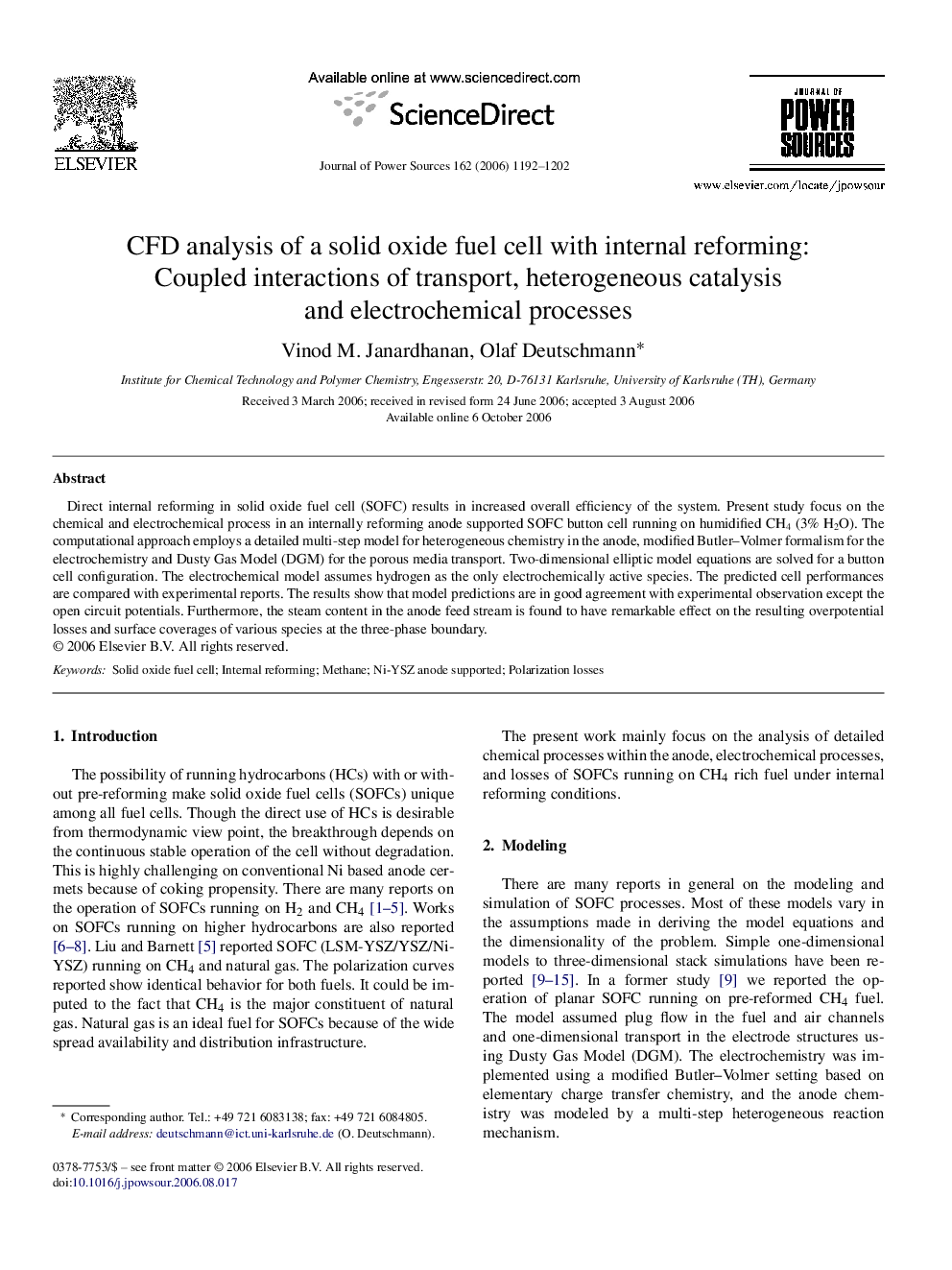| Article ID | Journal | Published Year | Pages | File Type |
|---|---|---|---|---|
| 1292493 | Journal of Power Sources | 2006 | 11 Pages |
Direct internal reforming in solid oxide fuel cell (SOFC) results in increased overall efficiency of the system. Present study focus on the chemical and electrochemical process in an internally reforming anode supported SOFC button cell running on humidified CH4 (3% H2 O). The computational approach employs a detailed multi-step model for heterogeneous chemistry in the anode, modified Butler–Volmer formalism for the electrochemistry and Dusty Gas Model (DGM) for the porous media transport. Two-dimensional elliptic model equations are solved for a button cell configuration. The electrochemical model assumes hydrogen as the only electrochemically active species. The predicted cell performances are compared with experimental reports. The results show that model predictions are in good agreement with experimental observation except the open circuit potentials. Furthermore, the steam content in the anode feed stream is found to have remarkable effect on the resulting overpotential losses and surface coverages of various species at the three-phase boundary.
